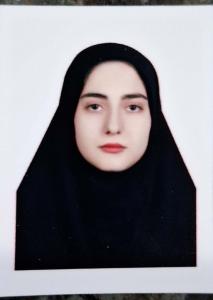: Investigating the effect of thermal post-treatment on the surface properties of chromium nitride-based coatings applied through PVD method - دانشکده فنی و مهندسی
: Investigating the effect of thermal post-treatment on the surface properties of chromium nitride-based coatings applied through PVD method

نوع: Type: پایان نامه
مقطع: Segment: کارشناسی ارشد
عنوان: Title: : Investigating the effect of thermal post-treatment on the surface properties of chromium nitride-based coatings applied through PVD method
ارائه دهنده: Provider: Elaheh Baghaie
اساتید راهنما: Supervisors: Dr. Hasan Elmkhah
اساتید مشاور: Advisory Professors: Dr. Meisam Noory
اساتید ممتحن یا داور: Examining professors or referees: Dr. Hamid Esfahani- Dr. Omid Imantalab
زمان و تاریخ ارائه: Time and date of presentation: 2025
مکان ارائه: Place of presentation: 71
چکیده: Abstract: Chromium nitride-based coatings are presently among the most efficacious protective layers in industrial applications due to their desirable properties. Among the common methods for applying these coatings, physical vapor deposition (PVD) via cathodic arc evaporation is more prevalent owing to advantages such as lower temperatures, higher deposition rates, and greater environmental compatibility. Given the importance of surface properties, including coating adhesion to the substrate, hydrophobicity, surface hardness, and tribological characteristics under operational conditions, evaluating the performance of these coatings is essential. To investigate the effects of exposing these coatings to elevated temperatures, post-deposition thermal treatments were employed. In this research, three post-treatments plasma nitriding, annealing at 500°C and 700°C, and laser processing were applied to CrN/CrTiSiN coatings deposited by Arc-PVD on 304 stainless steel substrates. Initially, surface and cross-sectional microstructures were examined using scanning electron microscopy (SEM) and field-emission scanning electron microscopy (FESEM). Coating thicknesses were approximately 1.3 μm for the CrN monolayer, 3 μm for CrN/CrTiSiN, and 1.2 μm for the top CrTiSiN layer. X-ray diffraction (XRD) analysis was utilized for phase identification of the coatings following the post-treatments. The intensity of chromium nitride peaks increased in the XRD patterns after plasma nitriding, whereas TiO₂ oxide phase peaks were observed after annealing. Surface roughness was measured in three directions; horizontal, vertical, and diagonal with average values expressed as Ra and Rz. The presence of oxide phases during annealing resulted in increased roughness, from 0.161 μm for the as-deposited coating to 0.167 μm for 500°C annealing and 0.193 μm for 700°C. The laser process induced surface turbulence, leading to an approximately sixfold increase in roughness compared to the as-deposited coating, while plasma nitriding reduced roughness to 0.121 μm. Over 90 days following the post-treatments, wettability tests using distilled water were conducted on the samples at regular intervals, with contact angles calculated. The most significant change was observed in the laser-treated sample, which exhibited a final contact angle of 128° after 90 days. The plasma-nitrided and annealed samples at 500°C and 700°C showed increased contact angles compared to the CrN/CrTiSiN coating, rising from 78° for the as-deposited coating to 90°, 82°, and 88°, respectively. To assess the tribological properties of the samples, ball-on-disk wear tests were performed using an alumina (Al₂O₃) abrasive in a dry environment at room temperature, over a distance of 200 m and under applied loads of 3 N and 5 N. Data obtained from these tests, including friction coefficient versus distance plots, volume loss, wear rate, wear track depth, and width, were used to compare sample performance under each load separately. The laser-treated sample exhibited poor wear resistance under both loads, similar to the bare substrate. At 3 N, volume loss and wear rate for the as-deposited coating, plasma-nitrided, and annealed samples at both temperatures were similar and more than 50 times lower than those of the steel substrate. However, at 5 N, the differences were more pronounced. Volume loss and wear rate for the as-deposited coating were 1.5 times lower, and for the 500°C annealed sample (with the best performance) 3 times lower, than those of the steel substrate. Volume losses at 5 N for the substrate, as-deposited coating, plasma-nitrided sample, 500°C annealed, 700°C annealed, and laser-treated samples were 1.33, 0.9, 0.96, 0.47, 0.64, and 1.08 mm³, respectively. The samples were subjected to polarization tests after 24 hours of immersion in a 3.5% NaCl solution. The as-deposited coating showed the lowest E_corr value of -55.14 mV, while the 500°C annealed sample exhibited the highest E_corr value of +91.45 mV, indicating a delayed onset of corrosion for this sample. Corrosion resistance of the samples was evaluated in a 3.5 wt.% NaCl solution for immersion times of 1, 3, and 24 hours under corrosive conditions.
